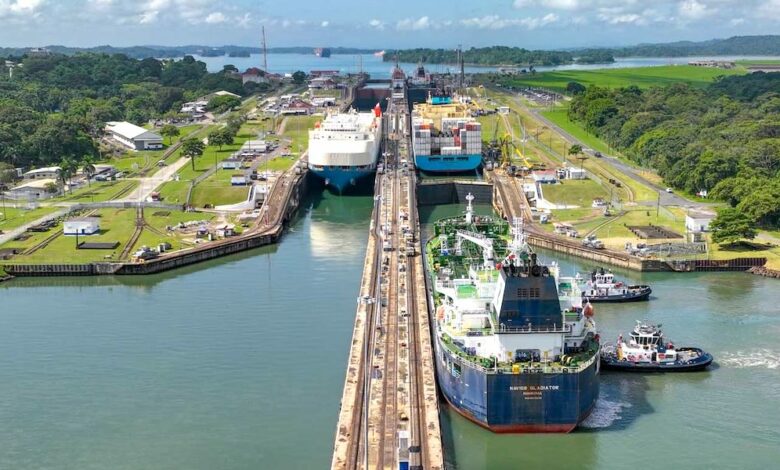Number of ships waiting for Panama transit slashed in half

The queue of ships waiting at both ends of the Panama Canal stands at just half the historical average since the waterway expanded back in 2016, highlighting the dramatic shift in seaborne trades in the western hemisphere seen in recent months since authorities slashed daily transit numbers as well as the maximum draft.
The latest data from the Panama Canal Authority (ACP) shows there are just 45 ships in the queue awaiting transit, exactly 50% less than the historical average of the last eight years. At the worst of the canal congestion last August there were more than 160 ships waiting at which point the canal’s administrators let it be known that the restrictions would be in place for many months to come leading to the shipping industry deciding en masse to seek alternative routes.
For the ships waiting for a northbound trip today, however, they are in for a long wait. The average days in the queue of non-booked vessels for northbound vessels stand at 15.1 days, while southbound ships only have to hang around for 3.6 days, according to data from the ACP.
The Panama Canal Authority (ACP) increased daily transits to 24 this month following solid amounts of rain over the past seven weeks. The measure replaces the previous announcement that forecasted daily transits at 20 slots for January and 18 slots for February.
Restrictions have been in place for more than six months in response to the challenges posed by the current state of Gatun Lake in the middle of the canal, which is experiencing unusually low water levels.
Persistent drought has seen the ACP slash the maximum draft on its larger locks as well as cut daily transit numbers by more than 40% sparking an exodus of traffic with many ships opting for longer routes either via the capes or via the Suez Canal, a waterway that has run into its own trouble in the past couple of months with the Houthis in Yemen targeting commercial sea traffic in the southern Red Sea.

Your News details absolutely helping me to know the present situation of shipping related all update information.thanks for excellent work for us.